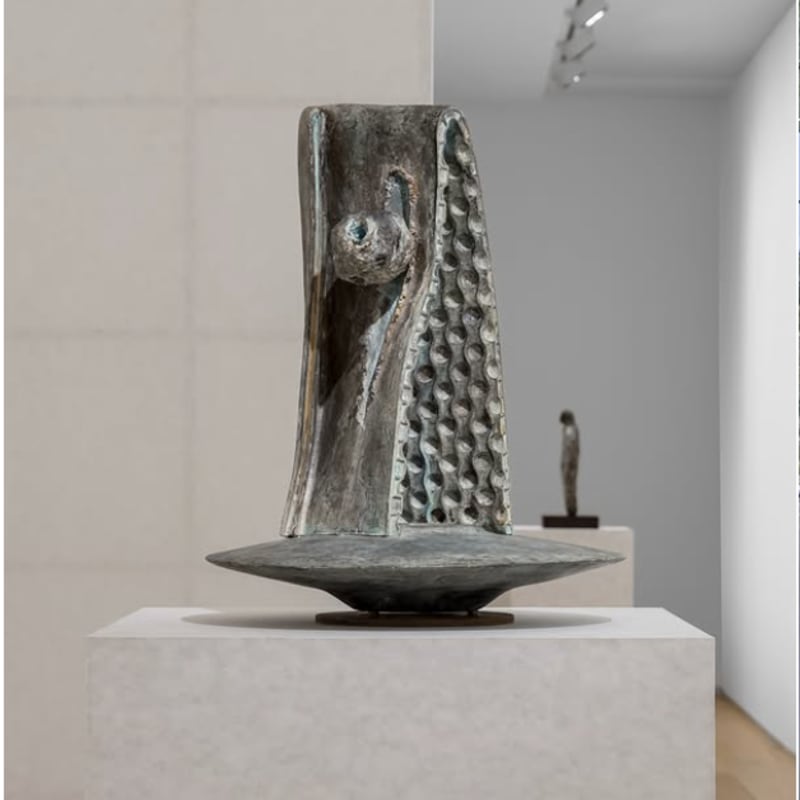Two Amsterdam Museums Join Forces for a Sprawling Anselm Kiefer Exhibition "Anselm Kiefer: Sag mir wo die Blumen sind" will be presented across the Stedelijk Museum and Van Gogh Museum.
By Min Chen
In an unprecedented collaboration, the Stedelijk Museum and Van Gogh Museum are teaming up to host a sprawling exhibition on Anselm Kiefer. Opening in 2025, the show will be presented as a diptych across both Amsterdam institutions, with each part tracing key aspects of the German artist’s oeuvre and creative influences through his past and new works.
The show, “Anselm Kiefer: Sag mir wo die Blumen sind,” is headlined by a new spatial work that the artist is unveiling at the Stedelijk. Still being completed by Kiefer, the 24-meter-long installation is set to occupy the space around the venue’s historic staircase. Its title, also the exhibition’s, is borrowed from Pete Seeger’s seminal 1955 folk song “Where Have All the Flowers Gone,” later made famous by Marlene Dietrich, and points to the flowers—specifically, Van Gogh’s Sunflowers—that inspired the artist’s most recent landscapes.
At the Stedelijk exhibition, Sag mir wo die Blumen sind, as well as another new installation, will join Kiefer’s earlier works that are emerging from the museum’s collection. The Stedelijk boasts a long relationship with the artist, marked by its hosting of his 1986 solo show and acquisition of his paintings including Innenraum (1981) and Märkischer Sand (1982). This latest exhibition will display all the Kiefer pieces the museum holds, offering a rare survey of the artist’s decades-spanning career.
“It will be truly remarkable to see these [new] installations shortly amid several of his iconic works from the 1980s,” Rein Wolfs, the Stedelijk’s director, said in a statement. “In this way, Kiefer looks back at the past and towards the future.’
Born in Donaueschingen in 1945, Kiefer is best known for his unflinching works that confront the myth-making, grief, and silence of a postwar Germany. “Ruins, for me, are the beginning,” he once said. His materials have ranged from lead and concrete to shellac and impasto; his tools acid baths and blowtorches. Somber and totemic, his paintings and sculptures are held in museum collections around the world and have earned him a prime spot in Europe’s Contemporary canon.
Throughout Kiefer’s long career, poet Paul Celan and German Romanticism have been guiding lights, as has Vincent Van Gogh. In his early years, the artist traced the Dutch painter’s journey from the Netherlands to Arles, France, where the 17-year-old Kiefer spent three weeks on a farm creating a body of drawings. Speaking to an audience at the Tate Britain in 2019, he explained he was not drawn to the emotional content of Van Gogh’s work, but rather his “workmanlike clarity.”
“What impressed me even then was the rational structure, the confident construction of his pictures—in a life that was increasingly slipping out of his control,” he said.
The exhibition at the Van Gogh Museum unpacks the Impressionist’s deep influence on Kiefer. It will bring the Dutchman’s key masterpieces together with the German artist’s new paintings, with the most notable pairings highlighting how sunflowers have served as motifs in both Van Gogh’s and Kiefer’s bodies of work—as in the former’s La Berceuse (1889) and the latter’s Tournesols (1996).
“Anselm Kiefer has been engaged with Van Gogh’s work from his early years. His recent work—displayed here for the first time—shows how Van Gogh continues to make his mark on Kiefer’s work today,” said Emilie Gordenker, director of the Van Gogh Museum.


















































































































































































